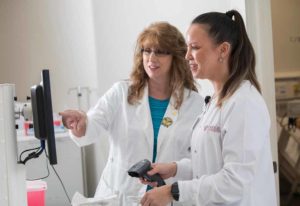THE LINK BETWEEN HIGHER EDUCATION AND WORKFORCE

Dr. John Meyer
by Dr. John Meyer,
President, Hodges University
With six degrees of separation, you can make unlikely connections. The link between higher education and workforce is direct.
We hear about the need for more professional and skilled workers, but do we truly understand what that means?
The challenge lies within what the average person’s understanding and interpretation of workforce education is, and isn’t.
At Hodges University, we understand the link between education and professional skills attainment and have designed our degrees and certifications specifically to fill the workforce needs of our region. However, there is some significant confusion of the meaning of workforce education.
Basically, there are two definitions: the federal and the common sense definition.
The federal definition says that workforce education occurs at levels only through the Associate in Science degree, which is a two-year degree. I would venture to guess that the attorneys, CPAs, medical doctors, nurse anesthetists, engineers, playwrights, and even the chemists and economists among us might disagree, and instead embrace the common sense definition: if a given occupation or career path requires more than a high school diploma, then by definition it is the product of workforce education.
 Over 50% of the open positions in the Southwest Florida region, which includes Collier, Lee, Charlotte, Hendry, and Glades counties, pay less than the High Skill High Wage (HSHW) threshold. That’s an entry wage of $14.96/hr. and a mean wage of $23.45/hr.
Over 50% of the open positions in the Southwest Florida region, which includes Collier, Lee, Charlotte, Hendry, and Glades counties, pay less than the High Skill High Wage (HSHW) threshold. That’s an entry wage of $14.96/hr. and a mean wage of $23.45/hr.
Would you be surprised to learn that of the Top 10 long-term projected job gaps in our region, none requires any college education at all? Those Top 10 represent about 130,000 existing jobs right now and another 22,000 projected by 2025.The relationship among education, wage growth, and occupational growth shows a definitive pattern.
More education leads directly to careers that typically pay higher wages.
In Southwest Florida, the average wage for someone with less than a high school diploma/GED is $11.02. For someone with a high school diploma/GED, that jumps to $13.62. Adult vocational graduates’ median wage is $18.23 while those with some college are at $29.62.
For those with a Bachelor’s degree, the median wage is $32.97, while someone with a Master’s degree or higher, the median wage is $45.84.
Hodges University is at the forefront of workforce-driven education by offering certifications and degrees that directly address our region’s needs, from business, technology, mental health and management to healthcare.
Speaking of healthcare, keep an eye out for news about our healthcare programs in the Fall that will help to fillmore gaps in that area.
We know that a thriving community needs a diversified workforce of professionals. Hodges University will continue to provide the education and training needed for our professionals.
Dr. John Meyer is the president of Hodges University, and one of the original authors of the Workforce Now study. To see the complete Workforce Now study, visit https://www.hodges.edu/presidents-welcome/.



Leave a Reply
Want to join the discussion?Feel free to contribute!